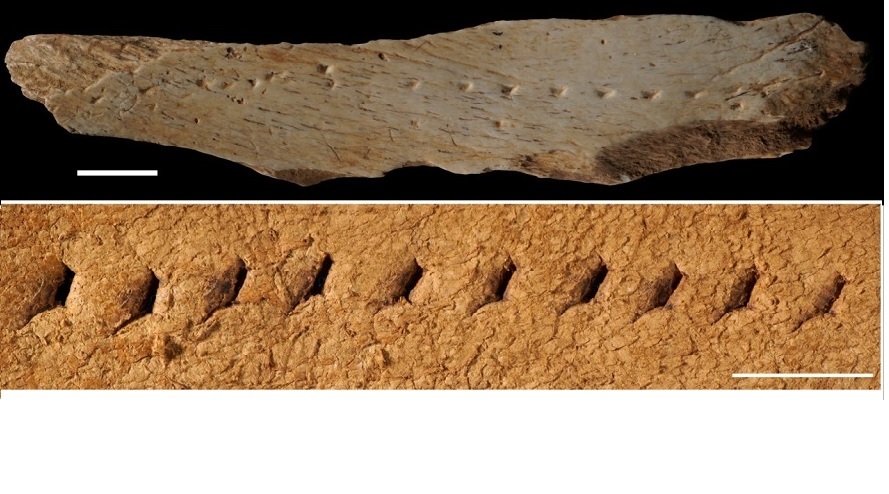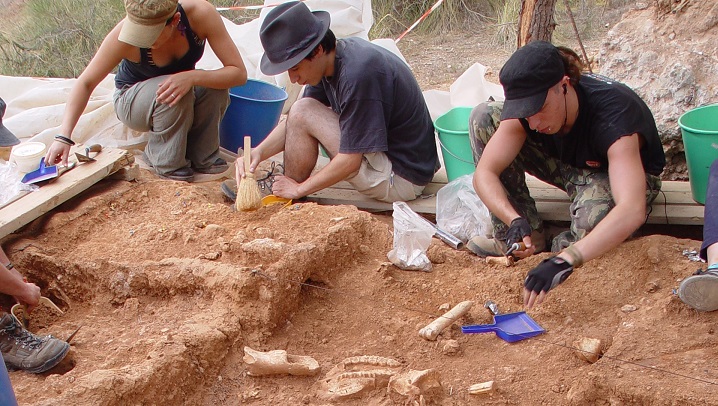Study reveals how 'Homo sapiens' made clothes 39,000 years ago


A group of researchers led by Luc Doyon, from the University of Bordeaux, including Montserrat Sanz and Joan Daura, from the University of Barcelona, have revealed the discovery of a support for perforating leather. It was found at the Canyars site in Gavà. This support is the fragment of a mammal coxal bone, probably from a horse or a large bovine, on the surface of which there are 28 perforations, according to microscopic analysis and experimental replicas, with lithic burins. The distribution of these perforations suggests that the aim was to give a linear stich consisting of at least ten equidistant holes with an average of five millimetres between each one. Five other perforation marks, each producing two or three holes, are also observed on the bone surface. Their morphology, orientation and arrangement rule out the possibility that they were decorative elements or records of numerical information. Archaeologists argue that the most plausible explanation is that they were produced during the manufacture or repair of leather goods.
Bone awls were already documented in South Africa —dating back to 73,000 years ago— and in Late Neanderthal sites in Europe, but nothing suggests that they were used to pierce leather. "What has now been found for the first time is evidence of the use of burins to pierce leather; in other words, the Canyars bone has left traces of this activity. From the shape of the perforations, as well as the distance between them, together with all the experimental work, we can state that they had enough technology to perforate the leather and thus make tight-fitting suits, shoes, tents...", says Montserrat Sanz.
The manufacture of close-fitting clothing was fundamental to the survival of Palaeolithic populations living in cold-climate environments. However, very little information is available on the tools and techniques they used to make close-fitting clothing before the invention of sewing needles made of bone. These needles, which archaeologists traditionally equate with the emergence of close-fitting clothing, are not strong enough to repeatedly pierce thick leather, so they must have been used primarily for sewing thin undergarments, which increased the thermal insulation properties of the clothing. Moreover, they are relatively recent: the first ones appeared in Siberia and northern China between 45,000 and 35,000 years ago, while in Europe they appeared around 26,000 years ago. This raised the question of what tools and techniques prehistoric groups used to make close-fitting clothing before the invention of sewing needles.
The archaeological remains found at the site, attributed to the Aurignacian period, and the radiocarbon dating obtained indicate that the piercing technique observed was used 39,600 years ago by modern humans living on the east coast of the Iberian Peninsula. The study thus reveals that, 14,000 years before the introduction of sewing needles in Europe, Palaeolithic hunter-gatherers were able to make tight-fitting leather goods and use them during episodes of extreme weather. This discovery provides essential new data for understanding otherwise inaccessible Palaeolithic sewing practices by studying the tools used to pierce leather.
"The Canyars site corresponds to a cold climatic period; in fact, it corresponds to a time of maximum climatic severity, with lower temperatures and aridity. For this reason, the clothes manufacturing helped human populations to resist the low temperatures", note Joan Daura.
The excavations at the site have been carried out by the Archaeology and Palaeontology Service of the Catalan Government and the Town Council of Gavà.
Multimedia gallery

